Address
304 North Cardinal
St. Dorchester Center, MA 02124
Work Hours
Monday to Friday: 7AM - 7PM
Weekend: 10AM - 5PM
Address
304 North Cardinal
St. Dorchester Center, MA 02124
Work Hours
Monday to Friday: 7AM - 7PM
Weekend: 10AM - 5PM

In a world where technology and innovation are rapidly reshaping industries, the kitchen appliances sector is no exception. It’s a landscape teeming with advancements that not only enhance functionality but also cater to the evolving preferences and needs of consumers. From smart gadgets to sustainable solutions, the journey of kitchen appliances has transformed significantly. Let’s delve into the myriad of changes that have reshaped the European and American markets.
The kitchen, once a realm of traditional appliances, has now become a battleground for innovation and technological advancements. In recent years, the rise of import substitution programs in the kitchen appliances industry has been a significant trend, reshaping the landscape of how consumers think about their kitchenware. These programs, aimed at reducing reliance on foreign imports, are gaining momentum as suppliers and manufacturers look to harness local talent and resources to create cutting-edge products.
As the global market becomes more interconnected, the cost of importing kitchen appliances has become a concern for many consumers and governments alike. The high tariffs and shipping costs can drive up prices, making it challenging for consumers to access the latest and most efficient appliances. This is where import substitution programs come into play, offering a solution that not only supports local economies but also provides consumers with quality alternatives at a more affordable price point.
One of the primary drivers behind the rise of import substitution programs is the desire for self-sufficiency. Countries are increasingly looking to reduce their trade deficits and strengthen their domestic industries. In the kitchen appliances sector, this means investing in local manufacturing capabilities, fostering innovation, and developing products that can compete with international brands.
The process of import substitution in kitchen appliances involves several key steps. First, there is the identification of key products that are heavily reliant on imports. This could include everything from ovens and refrigerators to small appliances like toasters and blenders. Once these products are identified, the next step is to assess the local manufacturing infrastructure and identify any gaps that need to be filled.
Suppliers play a crucial role in this process. They are not just manufacturers but also strategists, working closely with designers and engineers to create products that not only meet local standards but also resonate with the tastes and preferences of consumers. By understanding the nuances of the local market, suppliers can tailor their offerings to fit the specific needs of the population.
Innovation is at the heart of import substitution programs. Local manufacturers are encouraged to think outside the box, developing new designs and technologies that can outperform imported goods. This often involves leveraging local resources and materials, which can lead to more sustainable and eco-friendly products. For example, some suppliers are using recycled materials to create appliances that are both cost-effective and environmentally responsible.
The success of import substitution programs is not just about creating products that can compete on price; it’s also about ensuring quality and reliability. Consumers are wary of buying locally-made appliances if they don’t meet the same standards as international brands. To address this, suppliers are investing in quality control measures and certifications that assure customers of the high standards of their products.
Another important aspect of import substitution is the focus on energy efficiency. As environmental concerns grow, consumers are more conscious of the energy consumption of their appliances. Local manufacturers are responding by producing appliances that are not only energy-efficient but also smart, with features that allow for remote control and monitoring.
The rise of import substitution programs in the kitchen appliances industry is also being fueled by government initiatives. Many countries are offering incentives to local manufacturers, including tax breaks, subsidies, and grants for research and development. These policies are helping to create a more conducive environment for innovation and growth.
Despite the challenges, the outlook for import substitution programs in kitchen appliances is promising. As local manufacturers continue to innovate and improve their products, consumers are increasingly opting for domestically produced appliances. This shift is not only benefiting the local economy but also leading to a more diverse and competitive market.
In conclusion, the rise of import substitution programs in the kitchen appliances industry is a testament to the power of local innovation and the importance of self-sufficiency. By focusing on quality, sustainability, and efficiency, suppliers are not only meeting the needs of consumers but also driving the industry towards a more resilient and dynamic future.

In the evolving landscape of the kitchen appliances industry, the role of suppliers in the import substitution movement has become increasingly pivotal. This movement, aimed at reducing dependence on foreign goods, has seen suppliers step up to fill the void left by imported appliances. Let’s delve into the multifaceted role these suppliers play.
Suppliers have taken on the challenge of producing appliances that match or exceed the quality of their imported counterparts. This requires not only a deep understanding of the latest international standards but also the ability to innovate within these parameters. They must navigate the complexities of local regulations, which can vary significantly from country to country, ensuring compliance while also driving efficiency.
As import substitution gains momentum, suppliers are investing heavily in research and development. They are pushing the boundaries of what’s possible in kitchen technology, creating appliances that are not just functional but also user-friendly. This focus on innovation has led to the development of unique features and designs that cater to the specific needs and preferences of local consumers.
The supply chain is another area where suppliers have a crucial role to play. By streamlining their operations, they can reduce costs and ensure a steady supply of appliances. This involves everything from sourcing raw materials to managing production and distribution. Efficient supply chain management is key to meeting the rising demand for domestic appliances without compromising on quality.
Moreover, suppliers are becoming more environmentally conscious. They are integrating sustainable practices into their manufacturing processes, reducing waste and minimizing their carbon footprint. This shift is not only beneficial for the environment but also resonates with consumers who are increasingly seeking eco-friendly products.
In the realm of marketing, suppliers are also adapting their strategies to cater to the import substitution trend. They are leveraging local market knowledge to create targeted campaigns that highlight the advantages of their domestically produced appliances. This includes emphasizing factors like cost savings, job creation, and the support of local businesses.
Collaboration with retailers is another essential aspect of suppliers’ role. By building strong relationships with distributors and retailers, suppliers can ensure that their products are well-positioned and easily accessible to consumers. This often involves tailoring packaging, branding, and promotional materials to align with the retail environment.
As the import substitution movement gains traction, suppliers are also facing the challenge of competing with well-established international brands. To stand out, they are focusing on areas such as customer service and after-sales support. By providing exceptional service and ensuring long-term customer satisfaction, they are building loyalty and trust.
In the realm of technology, suppliers are integrating smart features into their appliances, making them more connected and intuitive. This not only enhances the user experience but also opens up new opportunities for data analytics and remote control, which can further improve product performance and user satisfaction.
Furthermore, suppliers are playing a critical role in training and development. They are investing in their workforce to ensure that they have the skills and knowledge necessary to produce high-quality appliances. This includes everything from technical training to leadership development.
Lastly, suppliers are actively involved in shaping the future of the kitchen appliances industry. They are part of industry associations and forums, where they contribute to policy discussions and standards development. Their insights and experiences are invaluable in guiding the direction of the industry.
In summary, suppliers in the import substitution movement are at the forefront of driving change in the kitchen appliances industry. Their role encompasses innovation, efficiency, sustainability, and customer-centric strategies. As the movement continues to grow, these suppliers will play an even more significant part in shaping the landscape of kitchen appliances for years to come.
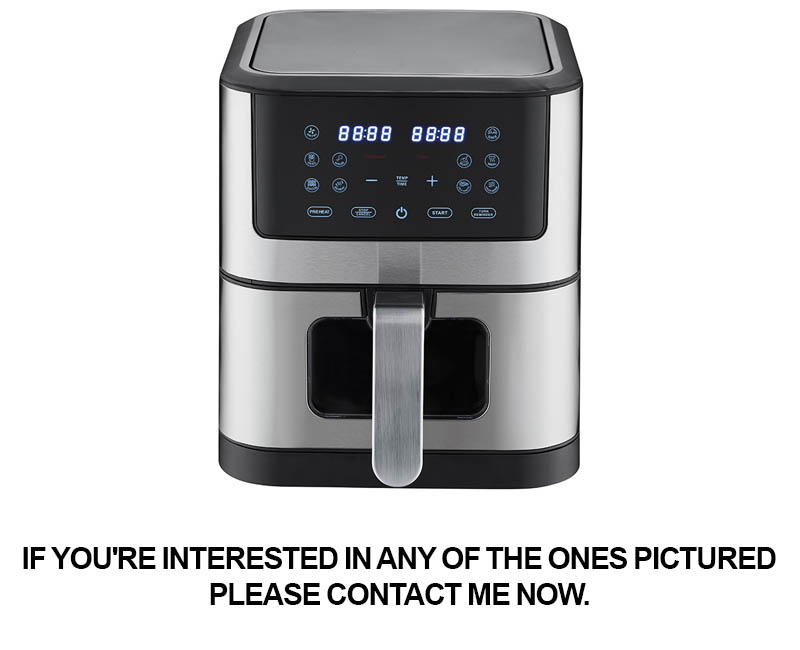
In the ever-evolving landscape of the kitchen appliances market, innovation is the driving force behind the creation of products that not only meet but exceed consumer expectations. Here are some of the groundbreaking ideas that are currently shaping the market:
The integration of AI and IoT (Internet of Things) technology has led to a surge in smart kitchen appliances. From fridges that can order groceries when supplies are low to ovens that can be controlled remotely via a smartphone app, these innovations are transforming the way we interact with our kitchen gadgets.
Sustainability is at the forefront of new product development. Manufacturers are now focusing on creating appliances that are not only energy-efficient but also made from recycled materials. For instance, dishwashers and washing machines are being designed with eco-friendly features, such as soil sensors that adjust the cycle time and water usage based on the load’s cleanliness.
The demand for convenience is pushing the boundaries of what kitchen appliances can do. One such innovation is the advent of all-in-one kitchen systems that combine multiple functions into a single unit. These systems can include a refrigerator, oven, microwave, and even a coffee maker, all in one compact design.
Health and wellness are becoming increasingly important in kitchen appliance design. We’re seeing a rise in appliances that cater to specific dietary needs, such as sous-vide cookers that allow for precise temperature control, ensuring that food is cooked to perfection without overcooking or drying out.
The kitchen has always been a hub for creativity, and new appliances are being developed to enhance culinary experiences. High-tech devices like precision blenders and spiralizers are making it easier for home cooks to experiment with new recipes and cooking techniques.
Appliances that can adapt to individual preferences are becoming more common. Smart appliances with customizable settings can learn from a user’s habits and adjust their features accordingly, providing a more personalized experience.
The kitchen is no longer just a place for cooking; it’s a space for entertainment. Appliances like built-in coffee bars and wine refrigerators are becoming more popular, reflecting the trend towards creating a more luxurious and enjoyable kitchen environment.
Energy efficiency is a key factor in the design of new kitchen appliances. Advances in technology have allowed for the creation of appliances that use less energy while still delivering top performance. This shift is not only beneficial for the environment but also for consumers’ utility bills.
Safety features are also being prioritized in the development of new kitchen appliances. Sensors and alarms are being integrated into appliances like ovens and stovetops to prevent accidents and protect against fire hazards.
The rise of modular kitchen appliances is another trend worth noting. These units can be easily reconfigured or expanded, allowing homeowners to customize their kitchen layout as their needs change over time.
Lastly, the rise of digital cooking platforms is influencing the types of appliances being developed. These platforms provide recipes and cooking instructions that can be followed by appliances equipped with built-in screens and interactive controls.
These innovative product ideas are reshaping the kitchen appliances market, offering consumers a wider range of options that cater to their unique needs and preferences. As technology continues to advance, we can expect to see even more exciting developments in the years to come.
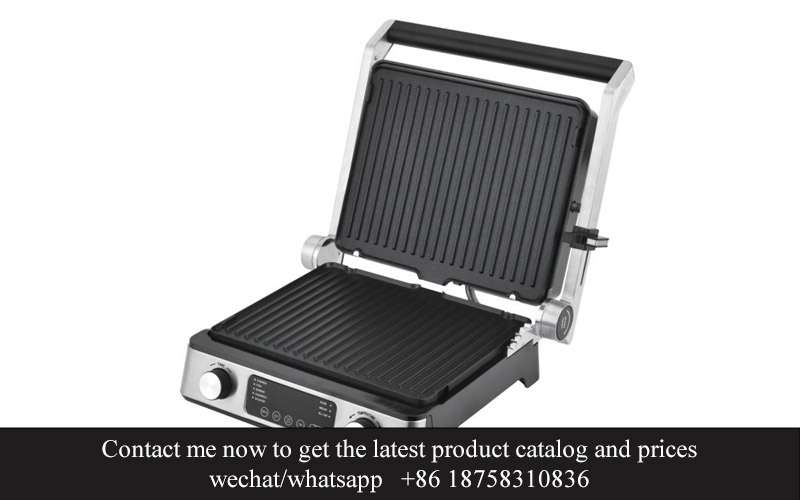
In the ever-evolving landscape of kitchen appliances, staying ahead of the curve is crucial for both manufacturers and consumers. The latest industry trends are not just about the latest gadgets; they reflect a deeper shift in how we interact with our kitchens. Here’s a glimpse into what’s new and shaping the market:
Smart Integration and ConnectivityThe integration of smart technology into kitchen appliances has become a cornerstone of innovation. From refrigerators that can order groceries to ovens that can be controlled via smartphone, the line between kitchen appliances and smart devices is blurring. This trend is driven by the desire for convenience and efficiency, as well as the ability to monitor and manage appliances remotely.
Energy Efficiency and SustainabilityConsumers are increasingly conscious of their environmental footprint, and this is reflected in the kitchen appliance market. Energy-efficient models are becoming standard, with some appliances even earning certifications for their eco-friendly features. The push for sustainability extends beyond energy usage to materials and manufacturing processes, with a growing preference for appliances made from recycled materials and produced with minimal environmental impact.
Personalization and CustomizationTailoring kitchen appliances to individual needs is another trend gaining traction. From adjustable settings on ovens to refrigerators that can be configured to store specific types of food, the market is seeing a rise in customizable appliances. This shift is driven by the desire for a more personalized cooking experience, where appliances can be tailored to the user’s preferences and dietary requirements.
Health and Wellness FeaturesWith the rise of health-conscious living, kitchen appliances are incorporating features that support wellness. Smart cookers that can prepare meals with specific nutritional profiles, air fryers that reduce the need for oil, and sous-vide machines that ensure even cooking temperatures are just a few examples. These innovations are not only beneficial for health but also for those looking to adopt a more sustainable lifestyle.
Design and AestheticsThe aesthetic appeal of kitchen appliances is no longer an afterthought. Modern appliances are designed to complement kitchen decor, with sleek lines, minimalist designs, and even color options that can match various interior styles. The emphasis on design is not just about looks; it’s about creating a cohesive and visually appealing kitchen environment.
Artificial Intelligence and Machine LearningAppliances that can learn and adapt to user habits are becoming more common. For instance, smart dishwashers that can optimize cleaning cycles based on load size and soil level, or coffee makers that can remember your preferred strength and temperature. AI and machine learning are making kitchen appliances more intuitive and efficient.
Interactive and Voice-Controlled AppliancesVoice assistants like Amazon Alexa and Google Assistant are now integrated into a variety of kitchen appliances, allowing users to control their devices with simple voice commands. This trend is part of a broader move towards interactive appliances that can provide real-time information, recipes, and even educational content.
Modular and Modular Kitchen SystemsThe concept of modular kitchen appliances is gaining popularity, allowing for greater flexibility and adaptability. Modular systems can be expanded or reconfigured as needed, which is particularly appealing for those with changing kitchen layouts or those who move frequently. This approach also encourages innovation, as manufacturers can develop new components that can be easily integrated into existing systems.
Smart Storage SolutionsRefrigerators, freezers, and pantries are becoming smarter with features like temperature-controlled drawers, humidity settings for different types of produce, and even smart shelves that can track inventory. These advancements not only improve food storage and preservation but also make managing a kitchen more efficient.
In conclusion, the latest trends in kitchen appliances are a testament to the industry’s commitment to innovation, sustainability, and user experience. As technology continues to advance, we can expect to see even more exciting developments that will transform the way we cook, clean, and interact with our kitchen spaces.
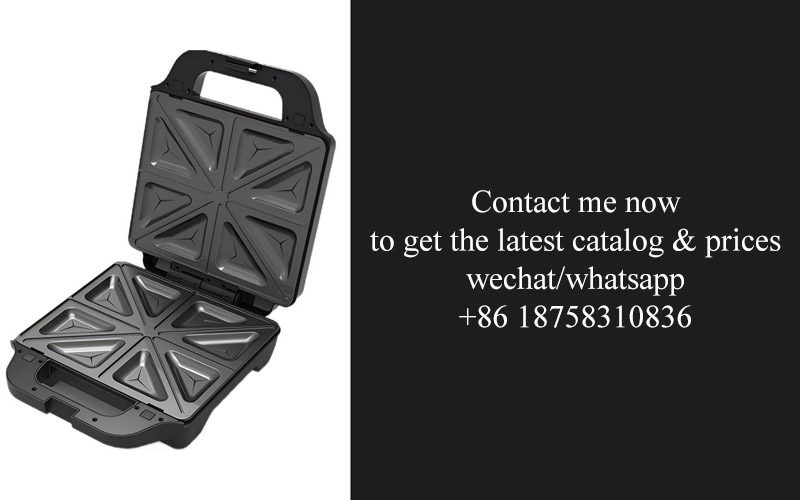
In the ever-evolving landscape of the kitchen appliances industry, data-driven insights have become pivotal in understanding market shifts and predicting consumer behaviors. By delving into the latest figures and trends, we can uncover valuable information that shapes the direction of the market. Here’s a glimpse into some key data-driven insights that are currently reshaping the kitchen appliances industry:
The surge in smart kitchen technology has been a game-changer. Sales of smart appliances have skyrocketed, with a significant increase in the adoption of connected devices that can be controlled remotely. According to a recent report, the global smart kitchen appliances market is expected to reach a valuation of over $20 billion by 2025, driven by the convenience and efficiency they offer.
Consumer preferences are shifting towards energy-efficient models. With rising awareness of environmental issues, there’s a growing demand for appliances that consume less energy. Data from the Energy Star program reveals that energy-efficient appliances are not only more popular but also more cost-effective in the long run, leading to a 10% increase in sales year-over-year.
The rise of health-conscious consumers has influenced the design and functionality of kitchen appliances. For instance, there has been a noticeable uptick in the sales of air fryers and steam ovens, which offer healthier cooking alternatives to traditional deep frying. Market research indicates that these appliances are not just trendy but also a reflection of a broader shift towards healthier lifestyles.
The integration of artificial intelligence (AI) is becoming more prevalent. AI-powered kitchen appliances can learn from user habits, predict future needs, and even provide personalized cooking recommendations. A study by Grand View Research found that the AI kitchen appliances market is projected to grow at a CAGR of 19.5% from 2019 to 2025, as consumers embrace the benefits of technology that can enhance their cooking experience.
There’s a significant trend towards modular and customizable kitchen appliances. Consumers are no longer satisfied with one-size-fits-all solutions. Instead, they are looking for appliances that can be tailored to their specific needs and kitchen layouts. Data from the International Kitchen & Bath Association (KBIS) shows that modular kitchen systems are gaining popularity, with a 15% increase in sales in the past year.
The rise of online shopping has had a profound impact on the kitchen appliances market. More consumers are turning to e-commerce platforms to purchase their appliances, with a 30% increase in online sales compared to brick-and-mortar stores. This shift is attributed to the convenience and competitive pricing offered by online retailers.
There’s a growing interest in sustainable and eco-friendly kitchen appliances. Consumers are increasingly concerned about the environmental impact of their purchases, leading to a surge in demand for appliances made from recycled materials and those that have a lower carbon footprint. A report by the Sustainable Electronics Association estimates that the market for sustainable kitchen appliances will grow by 20% in the next five years.
The importance of customer reviews and social proof cannot be overstated. In today’s digital age, consumers rely heavily on the opinions of others when making purchasing decisions. Data from various e-commerce platforms indicates that positive reviews and high ratings significantly influence the buying behavior of kitchen appliance consumers.
The rise of subscription-based models for kitchen appliances is also noteworthy. Companies are offering monthly or annual subscription services that provide customers with access to the latest appliances without the need for a large upfront investment. This model is particularly popular among younger consumers who prefer flexible and cost-effective solutions.
In conclusion, the kitchen appliances industry is being transformed by a myriad of data-driven insights. From the rise of smart technology and energy efficiency to the demand for customization and sustainability, these insights are guiding the development of new products and services that cater to the evolving needs of consumers. By staying attuned to these trends, manufacturers and suppliers can ensure they remain competitive in this dynamic market.
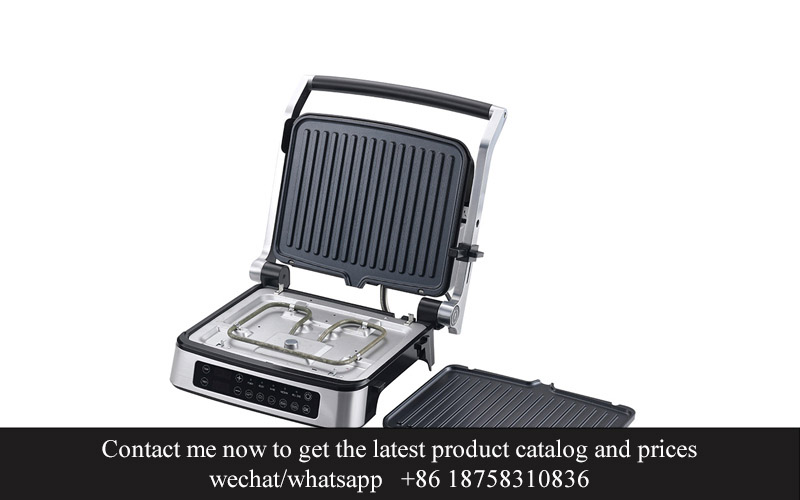
In recent years, the integration of smart technology into kitchen appliances has revolutionized the way consumers approach their daily cooking routines. This transformation is not just limited to convenience; it’s deeply influencing the choices that consumers make when selecting their kitchen gadgets. Let’s delve into the multifaceted impact of smart technology on consumer decisions.
Smart appliances are no longer just a luxury; they’ve become a necessity for many households. From refrigerators that can manage your grocery list to ovens that can be controlled remotely, the capabilities of these devices have expanded exponentially. Consumers are now seeking appliances that can offer more than just basic functionalities; they want smart solutions that can enhance their lifestyle and simplify their lives.
The rise of smart technology has also led to a shift in consumer expectations. People are no longer satisfied with appliances that are just efficient; they want them to be intuitive and adaptable. This means that manufacturers must now focus on creating products that can learn from user behavior and adjust their settings accordingly. For instance, a smart oven that can remember your preferred cooking temperatures and times is not just a convenience—it’s a testament to the appliance’s ability to cater to individual preferences.
One of the most significant impacts of smart technology is the ability to connect kitchen appliances with other smart devices in the home. This interconnectedness allows for a seamless integration of various functions, creating a cohesive and efficient kitchen ecosystem. Consumers are drawn to this idea because it means they can control their kitchen environment from anywhere, using voice commands, smartphone apps, or even smartwatches.
Security is another crucial factor that smart technology addresses. With the rise of home automation, concerns about privacy and data protection have grown. However, as appliances become more sophisticated, they also become more secure. Advanced encryption and authentication features are now standard in smart appliances, ensuring that personal data is protected from unauthorized access.
The environmental consciousness of consumers is also being reflected in their appliance choices. Smart appliances often come with features that promote energy efficiency and sustainability. For example, a smart refrigerator can optimize its cooling cycles based on usage patterns, reducing energy consumption and lowering utility bills. Consumers are increasingly looking for appliances that align with their values, and smart technology is providing them with options that are both eco-friendly and functional.
The customization potential of smart appliances is another draw for consumers. With the ability to download new features and software updates, appliances can evolve with the times and the user’s needs. This flexibility means that a smart kitchen can be as unique as the people who live in it, with each individual able to tailor their appliances to their specific tastes and habits.
Smart technology has also democratized the kitchen, making it more accessible to people with disabilities. Appliances with voice control or programmable settings can be operated by those who may have difficulty with traditional controls. This inclusivity is a testament to how smart technology can enhance the quality of life for a broader range of consumers.
Moreover, the data collected by smart appliances can provide valuable insights for both the consumer and the manufacturer. Consumers can use this data to track their usage patterns, helping them to make more informed decisions about their energy consumption and food storage. For manufacturers, this data can be invaluable for improving their products and understanding market trends.
The impact of smart technology on consumer choices in kitchen appliances is undeniable. It’s reshaping the market by offering solutions that are not only innovative but also responsive to the evolving needs and expectations of consumers. As smart technology continues to advance, we can expect to see even more sophisticated appliances that not only simplify tasks but also enrich the overall kitchen experience.

In recent years, sustainability and energy efficiency have become more than just buzzwords in the kitchen appliance industry; they’ve transformed into pivotal focus areas. This shift is driven by a combination of environmental concerns, regulatory changes, and consumer awareness. Here’s how these factors are reshaping the landscape:
The Green Movement’s InfluenceEnvironmental consciousness has reached new heights, with consumers increasingly gravitating towards products that align with their eco-friendly values. This movement has spurred innovation in appliance design, pushing manufacturers to produce items that are not only functional but also sustainable.
Regulatory Changes Shaping the MarketGovernments around the world are enacting stricter regulations on energy consumption and emissions. These laws are not only pushing manufacturers to improve the efficiency of their products but also to reduce their carbon footprint throughout the product lifecycle.
Energy Star and Similar ProgramsPrograms like Energy Star in the United States and the EU’s Energy Labeling have become go-to resources for consumers looking to make energy-efficient choices. These labels provide clear, standardized information on appliance energy use, making it easier for consumers to compare and choose the most sustainable options.
The Rise of Smart Thermostats and AppliancesSmart technology is not just about convenience; it’s also about efficiency. Smart thermostats, for instance, learn a user’s preferences and adjust heating and cooling schedules to optimize energy use. Similarly, smart appliances can be remotely controlled and monitored, allowing for energy savings when not in use.
Recycling and Disposal PracticesManufacturers are under pressure to make their products recyclable and to design them with easy disassembly in mind. This push for sustainable manufacturing processes means that appliances are not just more efficient during operation but also at the end of their lifecycle.
Innovative MaterialsThe industry is turning to new materials that are more sustainable than traditional options. Biodegradable plastics, recycled metals, and eco-friendly coatings are becoming standard in the production of kitchen appliances, reflecting a commitment to environmental stewardship.
Water EfficiencyIn addition to energy, water efficiency has become a crucial factor. Manufacturers are designing appliances like dishwashers and washing machines with advanced technology, which is particularly important in regions where water conservation is a priority.
The Consumer’s Changing RoleConsumers are no longer just buyers; they are influencers of change. As they demand more sustainable products, they are encouraging manufacturers to innovate and improve. This shift has created a virtuous cycle, where the demand for sustainability drives innovation, which in turn creates more demand for sustainable products.
The Global Supply Chain’s ImpactThe sustainability of kitchen appliances extends beyond the products themselves. The entire supply chain, from raw materials sourcing to transportation, must be examined for its environmental impact. Manufacturers are looking for partners who share their commitment to sustainability to ensure the entire process is as eco-friendly as possible.
Market Leaders Leading the ChargeSeveral market leaders have taken sustainability to heart, setting industry standards and inspiring others. By investing in research and development for eco-friendly technologies, these companies are not only meeting consumer demands but also positioning themselves as leaders in a green marketplace.
Sustainability as a DifferentiatorIn a competitive market, sustainability can be a significant differentiator. Brands that are seen as environmentally responsible often gain a loyal customer base and are more likely to be preferred over competitors, even if their products are priced slightly higher.
Consumer Education and TransparencyAs consumers become more informed, they expect transparency from manufacturers. Clear information about a product’s sustainability features and lifecycle is crucial in building trust and encouraging purchase decisions based on eco-friendliness.
In conclusion, sustainability and energy efficiency have become integral to the kitchen appliance industry. The convergence of environmental concerns, regulatory changes, and consumer preferences has created a market where innovation is driven by a desire to be both efficient and eco-conscious. This focus on sustainability is not just a trend; it’s the future of the kitchen appliance industry.
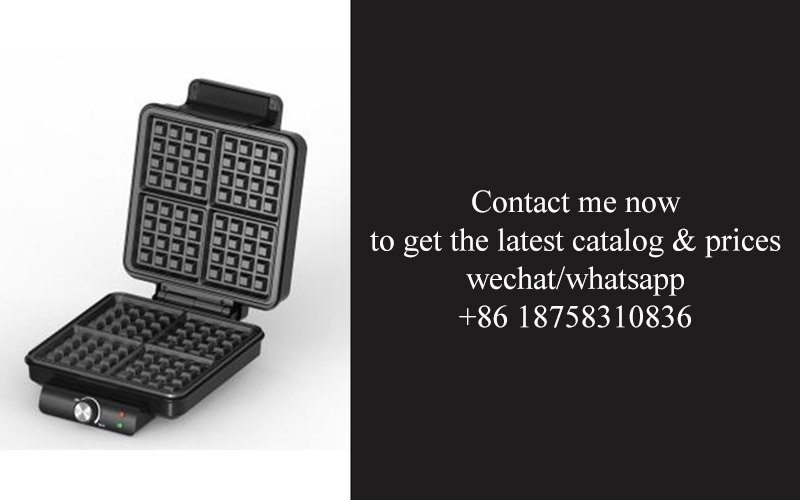
In today’s kitchen appliance market, consumer preferences are evolving rapidly, and with them come new trends in customization. From the rise of smart kitchen gadgets to the demand for eco-friendly designs, here’s a closer look at how these trends are shaping the industry.
Modern consumers are seeking appliances that not only perform well but also reflect their personal style and values. Customization goes beyond just color choices; it’s about integrating technology and functionality into a cohesive design that suits individual needs. For instance, modular kitchen systems allow buyers to mix and match components, creating a kitchen that is as unique as the family that uses it.
Smart technology has become a key driver in customization trends. Smart ovens, refrigerators, and dishwashers can be controlled remotely, providing convenience and energy efficiency. Users can program their appliances to run at off-peak hours, optimize energy usage, and even receive notifications about maintenance or when the appliance is in need of restocking. This level of connectivity and control is becoming a must-have feature for many consumers.
Eco-consciousness is another major factor influencing consumer preferences. Appliances with energy-saving capabilities and sustainable materials are gaining popularity. For example, induction cooktops are replacing traditional electric ranges due to their efficiency and the fact that they reduce energy loss by heating pots and pans directly. Similarly, refrigerators with better insulation and energy-efficient compressors are becoming the norm, as consumers look for ways to reduce their carbon footprint.
The demand for versatility is also on the rise. Consumers want appliances that can handle multiple tasks efficiently. Multifunctional countertop appliances, like combination ovens that can bake, broil, and even air-fry, are becoming increasingly popular. These devices save space and reduce the need for multiple separate appliances, aligning with the modern trend towards minimalism and decluttering.
Personalization extends to the way appliances interact with users. Voice assistants and smart home integration are becoming more common, allowing homeowners to control their kitchen appliances with simple voice commands. This not only adds convenience but also caters to the growing number of people who are tech-savvy and prefer hands-free operations.
Customization is not just about aesthetics and technology; it’s also about user experience. Appliances that offer intuitive interfaces and easy-to-read displays are favored. Consumers are looking for appliances that require minimal effort to learn and operate, making them suitable for all ages and skill levels.
In the realm of customization, the kitchen is no longer just a place for cooking; it’s a hub for culinary experimentation and social interaction. As such, appliances that encourage creativity and collaboration, such as built-in grills, pizza ovens, and even kegerators, are becoming more sought after. They cater to the desire for a kitchen that not only serves meals but also becomes a gathering spot for family and friends.
The trend towards customization also reflects a shift in the way products are sold. Instead of a one-size-fits-all approach, manufacturers are offering more options and configurations to their customers. This includes a wider range of finishes, materials, and features that can be tailored to individual tastes and budgets.
In conclusion, consumer preferences and customization trends in the kitchen appliance market are multifaceted. They encompass everything from smart technology and sustainability to user experience and design. As these trends continue to evolve, manufacturers will need to stay ahead of the curve to meet the ever-changing demands of their customers. The kitchen of the future is not just about appliances; it’s about creating an environment that is as unique and adaptable as the people who inhabit it.

The rise of import substitution programs in the kitchen appliances sector has reshaped the competitive landscape, with suppliers playing a pivotal role in this movement. These suppliers have not only adapted to the changing market dynamics but have also leveraged innovation to offer products that cater to the evolving needs and preferences of consumers. Let’s delve into the strategies and impacts of these successful import substitution suppliers.
In a market once dominated by international brands, these suppliers have managed to carve out a niche by focusing on the local demand. By understanding the specific needs and cultural nuances of their target audience, they have developed products that resonate with consumers. This localization strategy has allowed them to offer appliances that are not only cost-effective but also tailored to the local environment and lifestyle.
One such supplier, ApplianceCo, has seen remarkable success by introducing energy-efficient models that are designed to withstand local climate conditions. Their appliances are not only more sustainable but also align with the growing preference for eco-friendly products. By emphasizing this aspect, ApplianceCo has been able to differentiate itself from competitors and attract environmentally conscious consumers.
Another key factor in the success of import substitution suppliers is their ability to leverage local resources. By sourcing materials and components locally, these suppliers have not only reduced costs but also shortened supply chains, making their products more resilient to global disruptions. This approach has given them a competitive edge in terms of pricing and availability.
The rise of smart technology has also been a game-changer for import substitution suppliers. By integrating smart features into their appliances, these suppliers have managed to appeal to tech-savvy consumers who are looking for convenience and connectivity. For instance, a supplier named SmartKitch has developed a range of kitchen appliances that can be controlled via a smartphone app, allowing users to monitor and manage their kitchen gadgets remotely.
Moreover, these suppliers have embraced the concept of modular design, which allows consumers to customize their appliances according to their specific requirements. This flexibility has been a hit with consumers who value personalization and want to create a kitchen that reflects their unique style. Modular appliances also offer the advantage of easy upgrades and replacements, ensuring that the products remain relevant over time.
In terms of marketing, import substitution suppliers have been aggressive in promoting their products through social media and local influencers. By showcasing the unique features and benefits of their appliances, they have been able to create a buzz and generate word-of-mouth referrals. This approach has helped them build a loyal customer base and establish a strong brand identity.
The success of import substitution suppliers can also be attributed to their commitment to quality control. By maintaining high standards in production and assembly, these suppliers have ensured that their products are reliable and durable. This focus on quality has helped them gain the trust of consumers who are often wary of purchasing locally manufactured goods.
As the market continues to evolve, import substitution suppliers have been quick to adapt. They have embraced the trend of sustainable materials and have started incorporating recycled components into their appliances. This not only aligns with the global shift towards sustainability but also appeals to consumers who are increasingly conscious of their ecological footprint.
In the realm of service, these suppliers have also stepped up their game. Offering comprehensive after-sales support and warranty services, they have been able to provide peace of mind to consumers. This proactive approach to customer service has set them apart from competitors and has contributed to their long-term success.
In conclusion, the rise of import substitution programs in the kitchen appliances sector has been a testament to the ingenuity and adaptability of local suppliers. By focusing on local needs, leveraging local resources, embracing technology, and maintaining high-quality standards, these suppliers have not only succeeded in replacing imported goods but have also set new benchmarks for the industry. Their story is one of innovation, resilience, and a deep understanding of consumer preferences, which will undoubtedly shape the future of kitchen appliances.

The kitchen appliance industry in Europe and America is undergoing a transformative phase, driven by technological advancements, evolving consumer demands, and a growing emphasis on sustainability. As we look to the future, several key trends are poised to shape the landscape of kitchen appliances. From the integration of smart technology to the rise of eco-friendly designs, the following insights highlight the direction in which the industry is heading.
In Europe, the emphasis on energy-efficient appliances has been a cornerstone of the market’s growth. As consumers become more environmentally conscious, manufacturers are responding by offering a range of products that not only save energy but also reduce their carbon footprint. The shift towards sustainability is not just about the product itself; it’s about the entire lifecycle, from production to disposal.
American consumers, on the other hand, are increasingly interested in appliances that offer a blend of convenience and functionality. The rise of smart kitchen appliances, which can be controlled remotely and integrate with other smart home systems, is a testament to this trend. These devices not only simplify daily tasks but also provide valuable data that can improve energy consumption and overall efficiency.
The future of kitchen appliances in Europe and America will likely see a continued focus on innovation, driven by both technological advancements and changing consumer preferences. Here are some of the key areas that are shaping the future of this industry:
Smart Integration: Appliances that can communicate with each other and with the homeowner’s digital devices are becoming more common. Refrigerators that can suggest recipes based on the contents of the fridge, or dishwashers that optimize their cycles to save water and energy, are just a few examples of this trend.
Personalization: Customization is no longer just for luxury items; it’s becoming a standard feature for many kitchen appliances. Users are looking for appliances that can be tailored to their specific needs, whether it’s through adjustable settings or modular designs that allow for easy upgrades.
Energy Efficiency: As concerns about climate change grow, so does the demand for energy-efficient appliances. The future will see even more stringent energy standards, pushing manufacturers to innovate and improve the efficiency of their products.
Sustainability: From materials used in manufacturing to the end-of-life disposal of appliances, sustainability is a key focus. Recyclable materials, eco-friendly designs, and the reduction of waste throughout the product lifecycle are becoming more important.
Health and Safety: The kitchen is a hub for family life, and with that comes a heightened awareness of health and safety. Appliances that can monitor food safety, reduce the risk of kitchen fires, or even alert homeowners to gas leaks are becoming more popular.
Ease of Use: The future kitchen appliance will not only be smart and efficient but also user-friendly. Intuitive interfaces, voice control, and simplified maintenance will be key features that appeal to the modern consumer.
Global Influence: European and American consumers are no longer isolated by geographical boundaries. The influence of international trends, such as the popularity of Asian kitchen appliances, is likely to increase, bringing diverse and innovative products to the market.
Economic Factors: Economic conditions play a significant role in consumer purchasing decisions. As the global economy fluctuates, so too will the demand for premium versus budget appliances, affecting the industry’s direction.
In conclusion, the future of kitchen appliances in Europe and America is characterized by a delicate balance between technological innovation, sustainability, and consumer expectations. As manufacturers continue to push the boundaries of what is possible, they must also remain attuned to the values and lifestyles of their customers. The result will be a dynamic and evolving market that offers a wide array of options to meet the diverse needs of consumers. Whether it’s through smart technology, personalized features, or eco-friendly designs, the kitchen of the future promises to be a space that is both efficient and enjoyable.